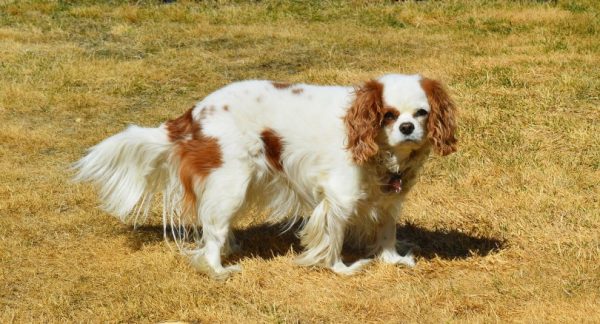While Dobermans might have shorter fur, that doesn’t mean they’re hypoallergenic. But why is this the case, and what causes pet allergies in the first place? Moreover, what can you do if you have pet allergies but you still want a Doberman?
We’ll answer all those questions and more for you below.

What Does Hypoallergenic Mean?
While many people think “hypoallergenic” simply means a dog that doesn’t shed or doesn’t shed much, that’s not what causes most pet allergies in the first place. Most people who have pet allergies struggle with pet dander.
Pet dander comes from a protein in a dog’s saliva and urine, and they spread this dander to themselves when they groom themselves. Then, the dog sheds the hair, creating an opening for this protein to enter your respiratory tract and cause an allergic reaction.
Because of this, a dog that doesn’t shed is less likely to cause an allergic reaction since there’s less loose hair for you to inhale. However, the length of the hair simply doesn’t matter. In fact, smaller fine hairs are likely to create more problems since it’s easier to stir them up and breathe them in.

The 5 Tips to Help With Dog Allergies
If you want a Doberman or another dog that isn’t hypoallergenic but you have pet allergies, there are a few things you can do to try and keep them in check. We’ve highlighted five tips you should consider if you suffer from pet allergies.
1. Have a Place to Get Away
Ideally, this should be your bedroom. This gives you a place where your body can reset without any pet hairs irritating everything. You spend a good amount of time sleeping, so having this as your space to get away from pet dander is a great idea.
It might be a little bit of an adjustment period for your pet since they won’t be able to sleep in the same room as you, but it can do wonders for your allergies.

2. Keep Cleaning
If there’s a lot of pet hair lying around your home, then it’s much easier to stir it up and flare up your allergies in the process. Vacuuming daily, cleaning up clutter where pet hairs can settle, and otherwise keeping a tidy home can help with this.
3. Brush/Comb Them Regularly
Your Doberman is going to shed, but if you can control the amount of shedding by brushing or combing them regularly, it can make a big difference. Just ensure you’re not breathing in the hair as you brush them out.
Otherwise, this tactic can backfire and make things even worse.

4. Use an Allergen Filter
No matter what you do, your Doberman is going to shed and you’re not going to be able to pick up every hair. That’s where an allergen-capturing filter can help. They’ll collect a lot of the hair you miss and filter out the allergens in them, so you don’t react.
You’ll need to keep up with the filter changes to keep it working, but this strategy can make a big difference.
5. Talk to a Doctor
If you’ve tried all the tips above and still can’t control your pet allergies, talk to a doctor and see what they can do for you. Perhaps they’ll prescribe you medication to help manage your allergies, or maybe they’ll have some other suggestions you can follow.


Final Thoughts
If you’re looking for a hypoallergenic dog, a Doberman isn’t the answer. Because they shed a lot of small, fine hairs, they are not the first breed you would think of for those suffering from pet allergies.
But if you’re still considering getting a Doberman, we highly recommend reaching out to your doctor before you bring one into the home. That way, you know exactly what you’re getting yourself into and how you can help mitigate any symptoms you might have.
- See also: How Fast Can Dobermans Run? Facts & FAQ
Featured Image Credit: gemphoto, Shutterstock




















